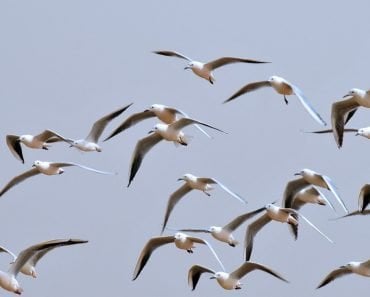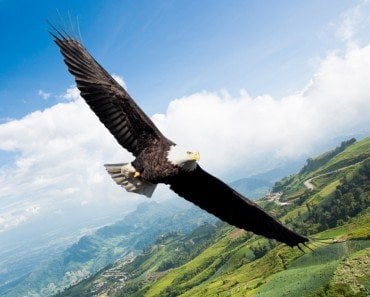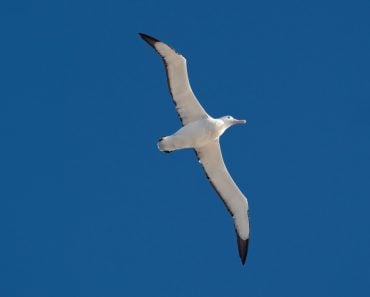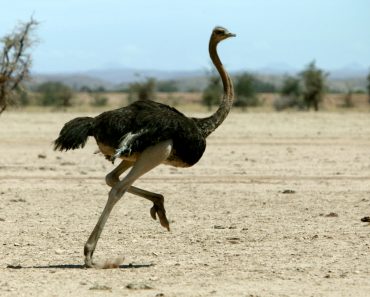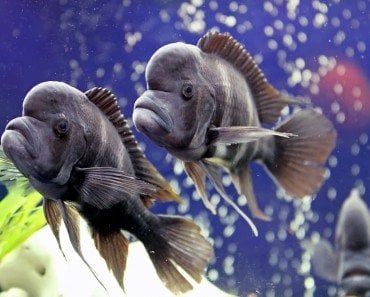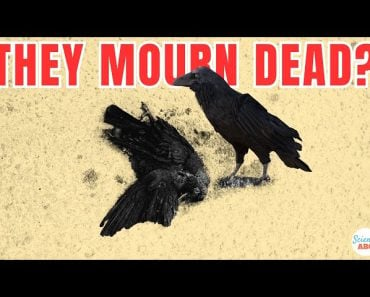Table of Contents (click to expand)
Some birds can sleep while they fly, like frigate birds. Other birds, like warblers, take long rests at pit stops as they migrate.
Meet the frigate bird. This large black bird is a little bigger than a crow, with male frigates having a brilliant red throat that puffs up like a proud chest when they’re attempting to woo a potential female mate. These seabirds live on several different coasts around the world—from Florida to the Indian Ocean—and spend most of their time foraging for food and hanging out on the coasts they call home.
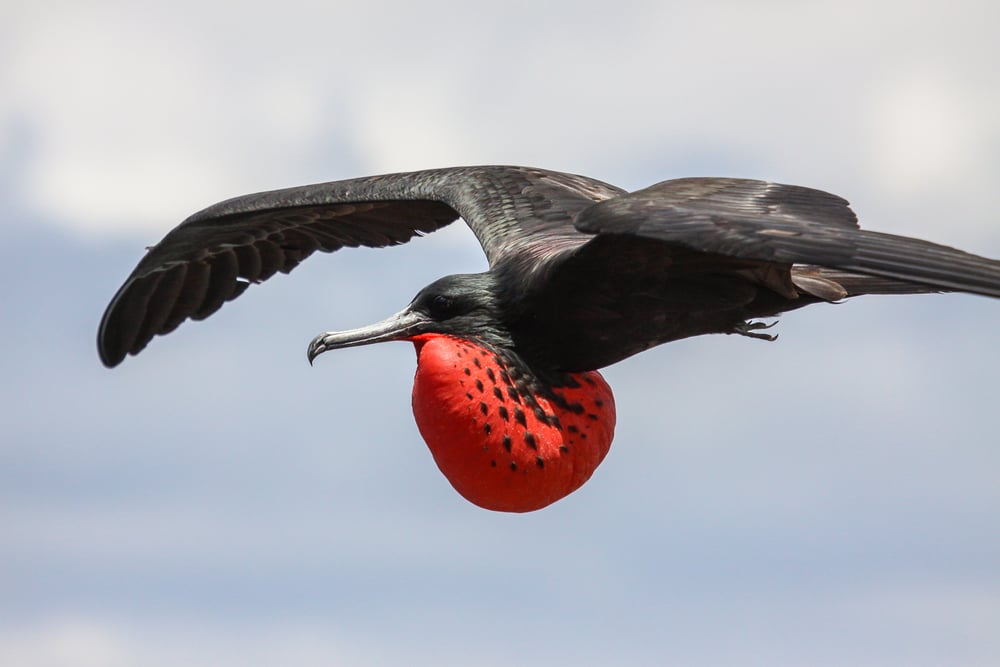
However, some frigate groups migrate to more tropical shores after the breeding season. This journey can take several months of continuous flying, day and night, with only a few pit stops in between.
If they fly day and night, when do they sleep? And it isn’t only frigates who pull this off; many birds take on arduous marathons from one destination to another. They must sleep, since sleep is crucial for most multicellular life. So, the question becomes… how and when do they sleep?
Recommended Video for you:
How Birds Sleep While Flying?
A paper by a group published in Nature Communications in 2016 tracked frigate birds over a period of a 10-day flight, to find out how these birds sleep. They performed electroencephalography, or EEG, where researchers can record the electrical activity of the brain, on the frigate birds as they flew on their long-distance trips. What they found made uproarious headlines – frigate birds can sleep while they fly!
Anyone who has ever tried to sleep standing up knows it is impossible to keep control of any muscle, let alone keep one’s arms “braced for flight”, right? However, birds don’t sleep like us mammals.
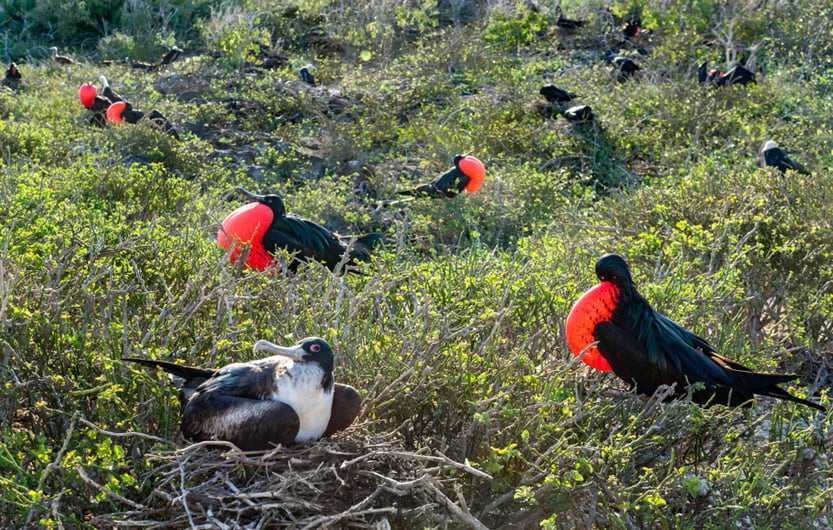
REM Sleep
Frigates, the researchers found, take well-timed super naps. These naps come in two types, the first being REM sleep, which lasts for 10 seconds. REM sleep, or Rapid Eye Movement sleep, is when we dream. In mammals, REM sleep can last for several minutes. For birds, and especially flying birds, REM sleep lasts for only a few seconds. Even then, REM sleep is crucial for proper brain functioning.
Uni-hemispheric Slow Wave Sleep
The other type of sleep that predominated in the air was uni-hemispheric slow-wave sleep. Slow-wave sleep is the deepest part of the Non-Rapid Eye Movement, or NREM sleep.
The uni-hemispheric part means birds put only half of their brain to sleep, keeping the other hemisphere awake. In fact, birds keep the eye connected to their awake hemisphere open. They do this to stay aware of predators or any other dangers, and many birds do this even when they aren’t migrating.
Even though frigate birds slept during the flight, they preferred to stay awake most of the time, spending a little less than 3% of their time sleeping. This suggests that frigates can modulate the amount of sleep they get. Once they reach land, they recover their lost sleep, spending almost half their time dozing.
In 2006, researchers studying the Swainson’s thrush, Catharus ustulatus, found that the bird takes several 9-second power naps during the migratory season. This research, unlike the one done on frigate birds, was performed on birds in captivity.
Sleeping In Pit Stops
So far, frigate birds are the only birds studied that show an ability to sleep while flying. It is entirely possible that many other birds adopt this strategy, but perhaps we just haven’t been able to study them yet.
However, seeing that in-flight sleep isn’t very restful, there must be another way to catch up on sleep. In fact, many migrators take occasional pit stops to re-fuel on rest before the next leg of their journey.
Take the garden warbler, Sylvia borin, for example. It breeds in the summer in Europe and in Asia in regions like Siberia. However, before the winter winds begin blowing in these regions, the birds migrate to warmer sub-Saharan Africa, charting a course of almost 4,000 km (or about 2,500 miles).
To successfully make it to Africa, the birds take occasional pit stops in several places to eat and sleep. Researchers from the University of Vienna, the Max Planck Institute, the Swedish University of Agricultural sciences, and the University of Rhode Island (a brilliant example of how collaborative science really is!) decided to study how these birds sleep on their Mediterranean pit stops.
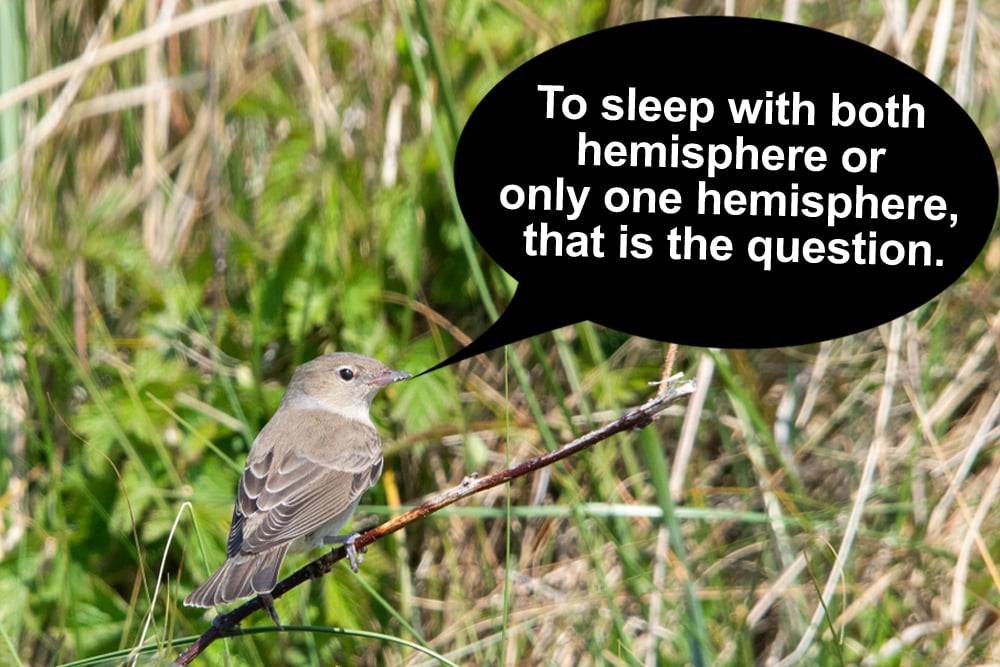
They noted that the bird’s sleeping strategy differed depending on how tired they got during their flight. The birds that were more tired slept amidst shrubby vegetation (the garden warbler’s preferred roosting spot) with their head tucked in between their wing. This allowed the bird to spend less energy, as both its hemispheres were asleep, and it loses less heat by tucking it head away.
In contrast, the less tired birds preferred sleeping without their head tucked away, remaining more aware and alert of their surroundings. This did mean that these birds spent more energy keeping alert during their sleep than those that tucked their head. However, by staying alert, they responded to predators faster than those that tucked their head away.
In the end, it all depends on what trade-off individual birds pick, whether to sacrifice complete sleep to flee predators at a moment’s notice, or get a good night’s sleep and risk being eaten.
Some Birds Don’t Sleep
Some birds might just shirk their sleeping completely, or as much as possible. Research on the Alpine Swift (Tachymarptis melba) found that the bird can fly for almost 200 days continuously. There is still little evidence that the bird sleeps.
The researchers in a 2013 paper published in Nature found that the Alpine swift did show some periods of decreased activity that could be corresponded to sleep-like behavior, but more research is needed to know for certain.
Other birds, like the male pectoral sandpiper (Calidris melanotos), sacrifice sleep altogether. During mating season, intense competition between males to mate often means sleeping less to sire more baby sandpipers. Research on the sandpipers found exactly that.
The male sandpipers that slept the least sired the most offspring. Their sleep loss didn’t impact their performance or competitive advantage in the mating game. This, though not an example of migration, indicates that birds can manipulate their sleep without undergoing severe physiological repercussions.
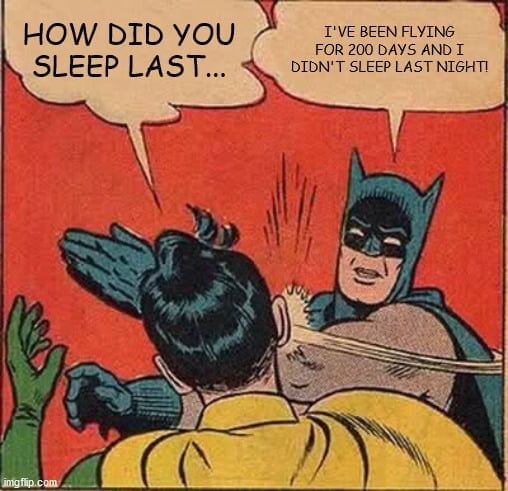
Not All Birds Sleep Alike
From frigate bird sleeping on the wing and warblers resting at a pit stop, to sandpipers abandoning sleep altogether, it is clear that birds, though all winged and beaked, are widely different from one another in their behaviors. They sleep differently and seem to react to the lack of sleep differently too. This makes studying birds, especially migratory birds, very exciting for researchers, but occasionally frustrating.
Fortunately, there are many new technologies, like the EEG used in the frigate birds study, and the more recent ICARUS project, which uses the satellite on the International Space Station, the ISS, to monitor migratory birds on their flight paths. These could lead to exciting new breakthroughs in understanding how migratory birds take on their formidable journeys and defy the seemingly universal need for sleep!
References (click to expand)
- Weimerskirch, H., Borsa, P., Cruz, S., de Grissac, S., Gardes, L., Lallemand, J., … Prudor, A. (2017, January). Diversity of migration strategies among great frigatebirds populations. Journal of Avian Biology. Wiley.
- Rattenborg, N. C., Voirin, B., Cruz, S. M., Tisdale, R., Dell’Omo, G., Lipp, H.-P., … Vyssotski, A. L. (2016, August 3). Evidence that birds sleep in mid-flight. Nature Communications. Springer Science and Business Media LLC.
- Ferretti, A., Rattenborg, N. C., Ruf, T., McWilliams, S. R., Cardinale, M., & Fusani, L. (2019, August). Sleeping Unsafely Tucked in to Conserve Energy in a Nocturnal Migratory Songbird. Current Biology. Elsevier BV.
- (2012) John A. Lesku Adaptive Sleep Loss in Polygynous Pectoral .... evolocus.com
- Fuchs, T., Haney, A., Jechura, T. J., Moore, F. R., & Bingman, V. P. (2006, October). Daytime naps in night-migrating birds: behavioural adaptation to seasonal sleep deprivation in the Swainson's thrush, Catharus ustulatus. Animal Behaviour. Elsevier BV.
- Liechti, F., Witvliet, W., Weber, R., & Bächler, E. (2013, October 8). First evidence of a 200-day non-stop flight in a bird. Nature Communications. Springer Science and Business Media LLC.


